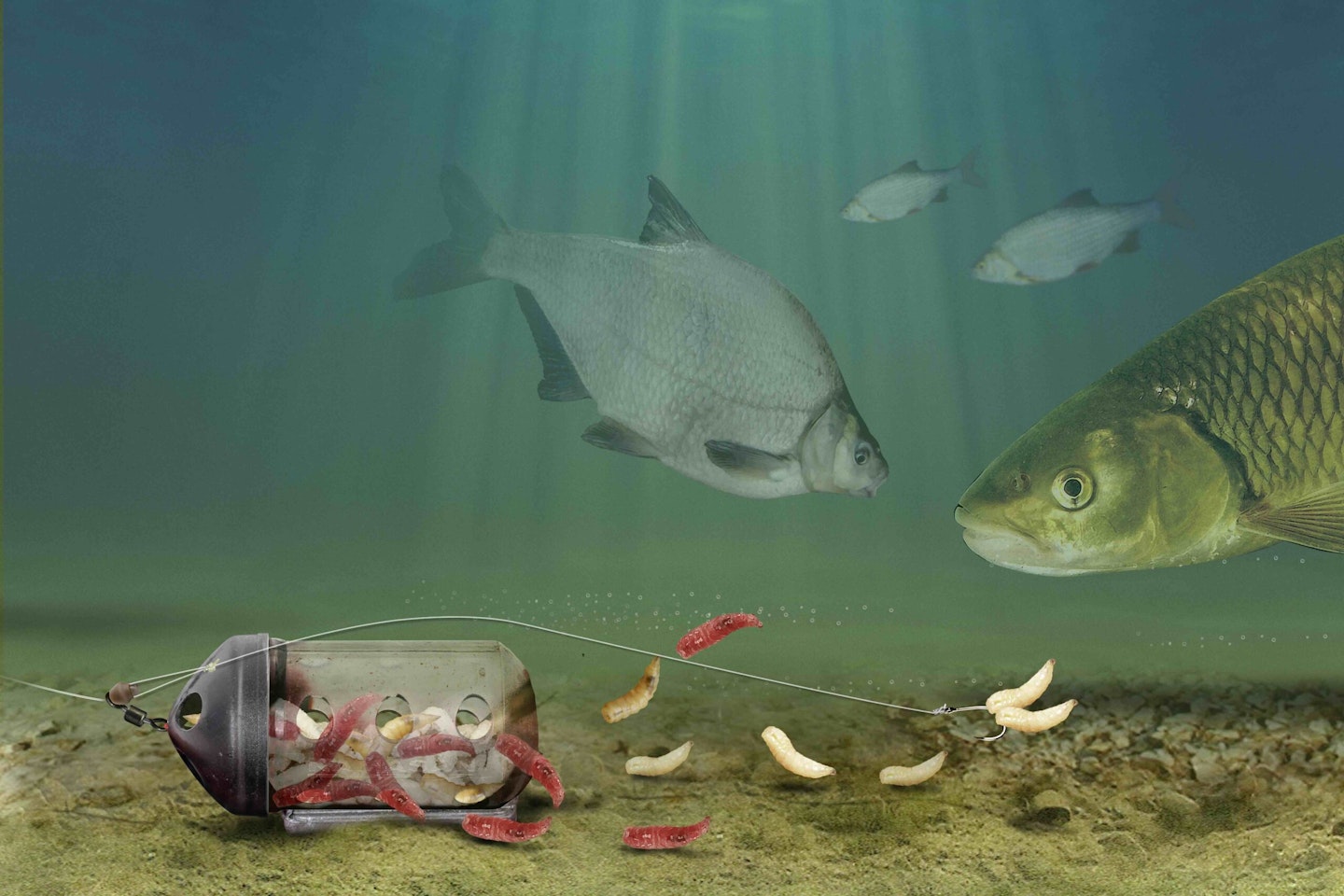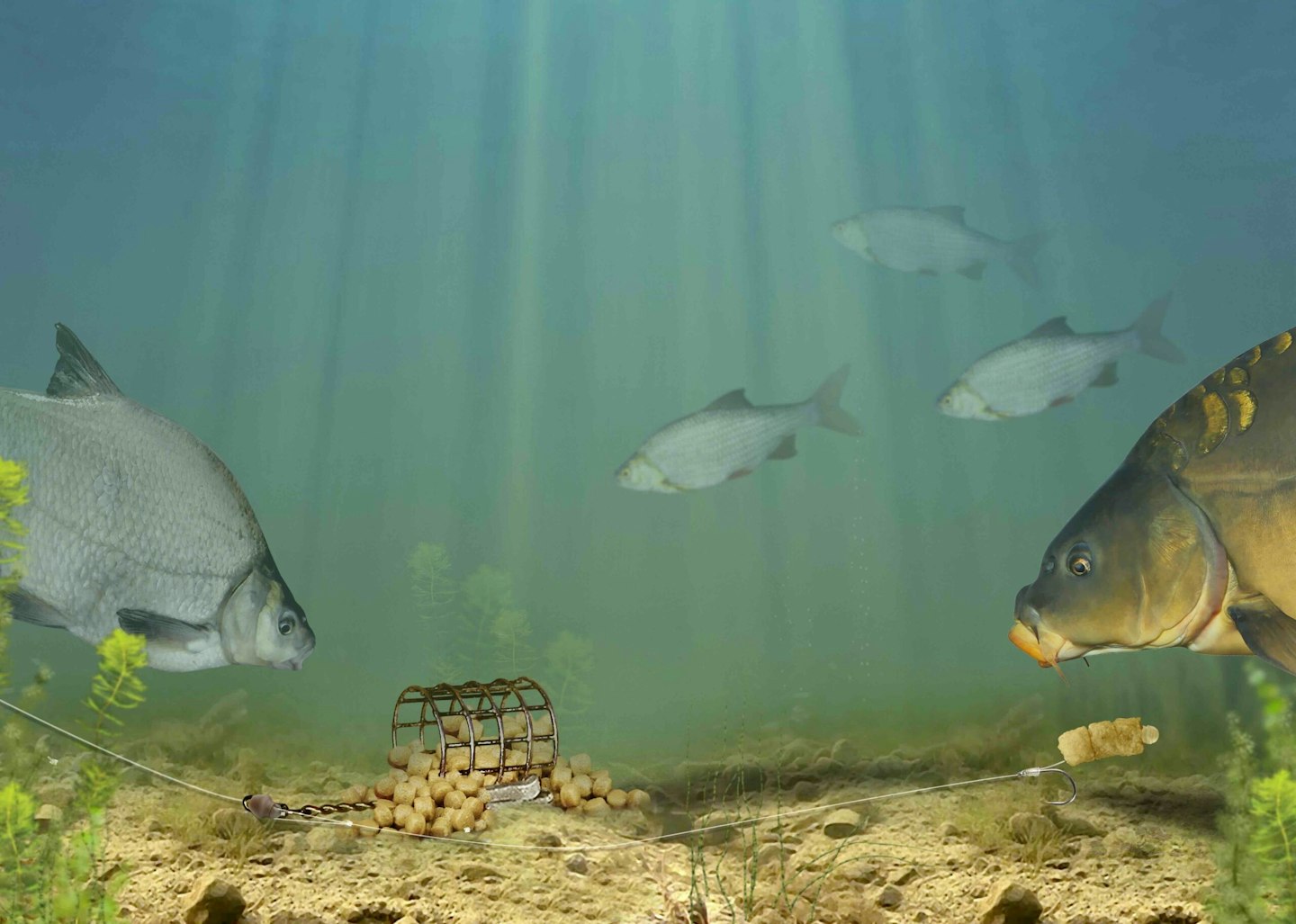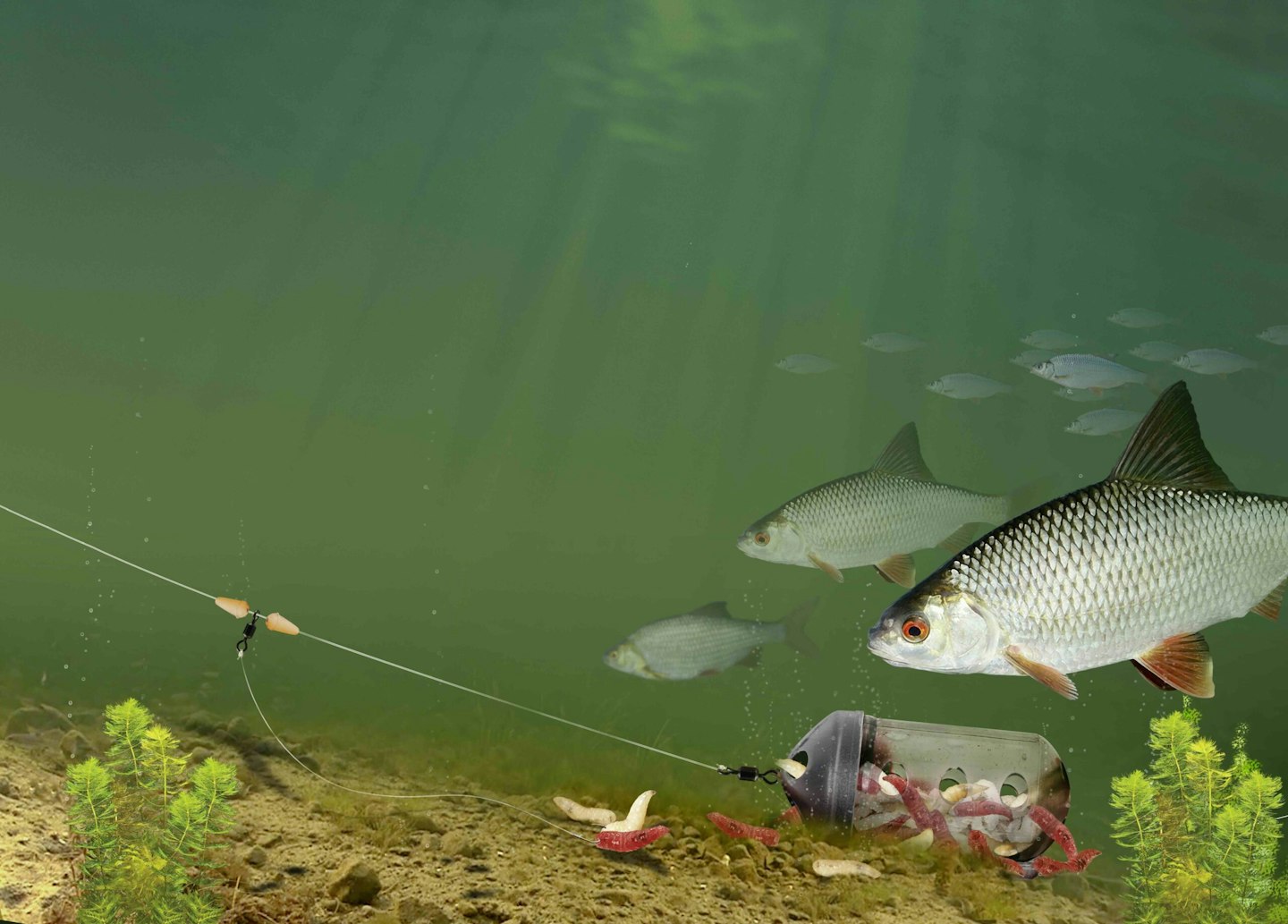When you want to fish beyond pole range, feeders often have a positive effect on your results. These rigs can be tailored to your specific needs or the species you are targeting, also working wherever you take them, so be sure to give them a try on your next session...
Maggot feeder
Huge numbers of roach, bream, chub, tench and barbel are often present in both natural waters and commercial fisheries nowadays, and a Method or pellet feeder can be a little selective at times, meaning you miss out on a bumper mixed bag so try a maggot feeder. Whenever the tip goes round, it is impossible to guess what has grabbed the hookbait.
Feeder
A 20-30g feeder with a cap at the top is the preferred feeder for this style of angling. The only thing that generally varies is the size and the amount of holes present, a bigger feeder holds more bait and a more perforated feeder allows the maggots to escape quickly. As a guide, in summer a larger feeder with more holes will help keep fish feeding in your peg, whereas the opposite is better in the colder months.
Terminal tackle
Don’t fish too heavy. Start on a 0.12mm hooklength with a size 16 or 18 hook. Use a durable 6lb mono mainline that can cope with the rigours of casting a loaded feeder. Start with an 18in hooklength but don’t be afraid to switch. If you are struggling for bites, extend it slightly but if you are getting indications that fish are nearby, shorten it.
Loosefeed
Vary the amount of bait you put into the feeder. Fill it fully on some casts and pack in less on others. Rotation is the key to keeping bites coming. A top tip is to tape up some of the holes in winter as this will reduce the rate at which the maggots can exit, allowing you to leave the feeder out for longer.
SOME OF THE BEST FEEDER FISHING RODS CAN BE FOUND IN OUR BUYER'S GUIDE...

Cage Feeder
If groundbait or pellets are the dominant bait on your local venue, a cage feeder is very hard to beat. There are times when fish are unwilling to grub around on top of the feeder and this is when a cage feeder works wonders. You can use it with groundbait, just pellets or load it with loose offerings like maggots and casters, it really depends on how the fish are feeding on the day, but this style of feeder allows you to be versatile. Top tip, keep casting to draw more fish into the area.
Feeder
There are lots of different styles of cage feeders you can buy, from bullet types with the weight loaded at the bottom for distance, to the more traditional feeders with the weight strapped to the underside and it generally doesn't matter if you go for a plastic or wire mesh. A top tip is to start with a slightly bigger feeder to get some bait into the swim before reducing the size to concentrate the fish into a smaller area, hopefully catching them quicker.
Terminal tackle
If you are fishing for a range of fish sizes, use 6lb mainline, a 0.15mm hooklength and a size 16 hook, tailor the length of the hooklength to how aggressive the fish are feeding and how quickly you're getting bites. Some days, a short hooklength is king, but on days when the fish are wary, a long hooklength scores best as it allows the fish to watch the hookbait fall naturally before intercepting it.
Loosefeed
Groundbait is the preferred primary loosefeed in a cage feeder. The beauty of the holes in the style of feeder is that the bait will quickly disperse no matter how hard you squeeze it in, great for days when the fish are feeding well. Then it is just a case of adding whatever loosefeed options you want to the groundbait mix. Top tip, a sloppier groundbait can help create a cloud when the feeder hits the water, helping to draw more fish into the area.
YOU DON'T NEED TO SPEND A FORTUNE TO GET A GREAT REEL, CHECK OUT OUR BUYER'S GUIDE TO SOME OF THE BEST AVAILABLE.

Helicopter Rig
The helicopter rig is deadly when fishing for a multitude of species, with the added advantage of it being one of the most tangle-proof rigs you can use. The rig is fished paternoster style, with the feeder attached to the bottom of the mainline whilst the hooklength sits above, causing it to rotate when cast, hence the name.
Feeder
When it comes to feeder choice for this rig, it really doesn't matter and the species you are fishing for will dictate what is best. If you're fishing for roach, a maggot feeder is usually the best choice but when fishing for bream and tench, a cage feeder filled with groundbait is generally a better bet. The only feeders it doesn't really work with are Method and pellet feeders.
Terminal tackle
As the feeder isn't sliding on the line you can get away with a slightly lighter mainline than with other styles, usually a 5lb line is perfect, which will also aid your casting distances too. Hooklength is key with this rig though, you want a very short one, around 4-8in, which is trapped between to gripper/float stops near the feeder.
Loosefeed
Again, loosefeed will depend on what type of feeder you have opted to use. Maggots and pellets are great in a block-end feeder but a cage or bullet feeder is great with groundbait and pellets.
TENCH ARE A GREAT SPECIES TO TARGET ON THIS RIG, CHECK OUT THE BEST SPECIMEN RODS HERE.

